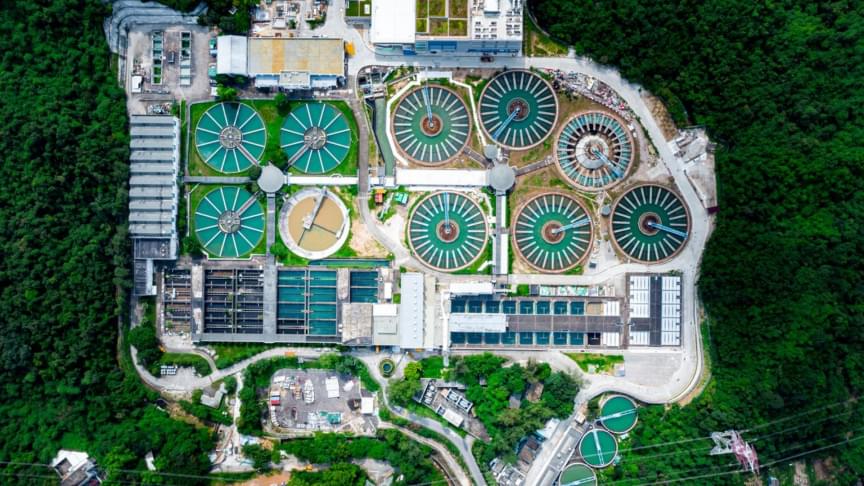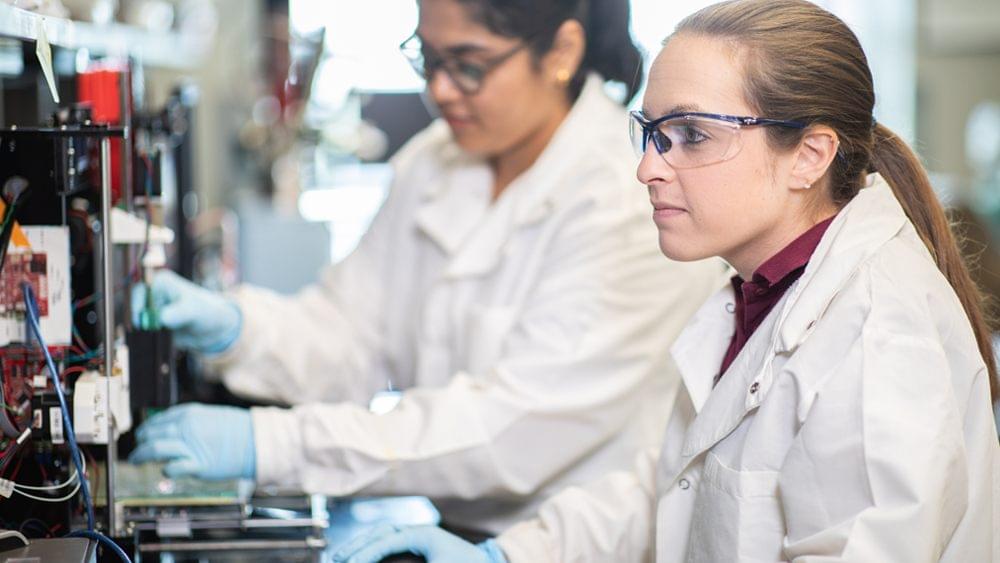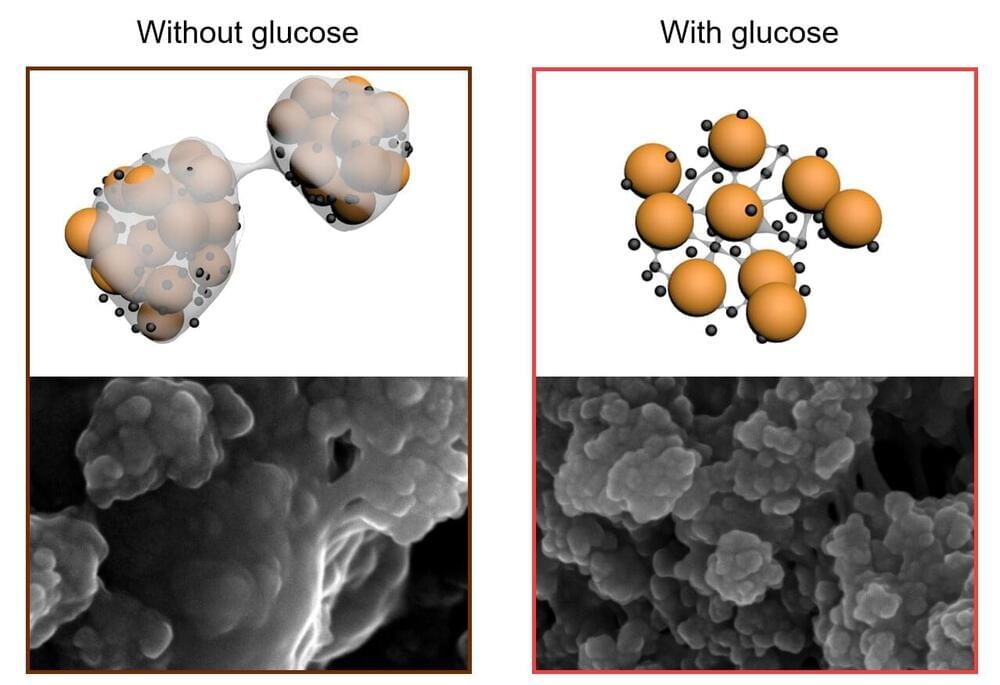Columbus OH (SPX) Sep 24 2021 — Engineering researchers have developed a method to use signals broadcast by Starlink internet service satellites to accurately locate a position here on Earth, much like GPS does. It is the first ti.


The study had been supported by LG Energy Solution’s open innovation, a program that actively supports battery-related research. LGES has been working with researchers around the world to foster related techniques.
Silicon anodes are famous for their energy density, which is 10 times greater than the graphite anodes most often used in today’s commercial lithium ion batteries. On the other hand, silicon anodes are infamous for how they expand and contract as the battery charges and discharges, and for how they degrade with liquid electrolytes. These challenges have kept all-silicon anodes out of commercial lithium ion batteries despite the tantalizing energy density. The new work published in Science provides a promising path forward for all-silicon-anodes, thanks to the right electrolyte.
“With this battery configuration, we are opening a new territory for solid-state batteries using alloy anodes such as silicon,” said Darren H. S. Tan, the lead author on the paper. He recently completed his chemical engineering PhD at the UC San Diego Jacobs School of Engineering and co-founded a startup UNIGRID Battery that has licensed this technology.

New chip eliminates the need for specific decoding hardware, could boost efficiency of gaming systems, 5G networks, the internet of things, and more.
A new silicon chip can decode any error-correcting code through the use of a novel algorithm known as Guessing Random Additive Noise Decoding (GRAND). The work was led by Muriel Médard, an engineering professor in the MIT Research Laboratory of Electronics.

Back to Aliens, we find “Building Better Worlds” as the main slogan of the nefarious Weyland-Yutani Corporation. Apparently, terraforming (and presumably mining) celestial bodies is a large part of their galactic business. When acid hits the fan and the xenomorphs take over Hadley’s Hope, their operations on LV-426 have been active for decades. But is that enough time for Acheron (formally labelled as LV-426) to develop a breathable atmosphere?
The film itself doesn’t have many answers when it comes to terraforming, but the procedure appears to revolve around reutilizing the existing atmosphere – breaking down pre-existing elements, transforming, and redistributing them – instead of starting from scratch, which would indeed take centuries. Basically, mankind can’t turn any planet or planetoid into an Earth-like environment in the Alien universe; most components need to be present already, same goes for the atmospheric conditions. This fixes the centuries-long problem that comes up in other works of fiction, or at least makes the storytelling more realistic.
Complementary material detailing the Alien universe’s history and technology claim the first “Automated Atmosphere Processor” became a reality in 2,029 with a first terraforming process happening on Gliese 667 Cc during the 2030s and ending around 2040. The Weyland Corp Terraforming Division was created in 2,072 effectively starting a new age of space exploration. As stated before, native atmospheres are transformed thanks to the company’s “Atmosphere Processing Plants” and other techniques, such as algae bloom tanks that consume excess carbon dioxide and generate oxygen. It all depends on the properties of planets which have been previously scouted, inspected, and approved for viable terraformation.

Bacteria may get a bad reputation in general, yet it’s actually generally healthy and serves an important role in many habitats, including human bodies. From supporting life on Earth to being employed in industrial and medicinal processes, bacteria have their figurative fingers in many pots — some varieties of bacteria can even filter tainted water and make it safe for human consumption.
A team of researchers from the Indian Institute of Technology, Banaras Hindu University (IIT-BHU) has found a bacteria that can do just that — Named “microbacterium paraoxydans strain VSVM IIT (BHU)” by the scientists, it can separate toxic hexavalent chromium from water in an effective and eco-friendly manner, according to a research published in the Journal of Environmental Chemical Engineering.
Hexavalent chromium is a heavy metal ion that is used in electroplating, welding, and chromate painting, among other things. It’s said to be responsible for health problems in humans like cancers, kidney and liver malfunctioning, and infertility. When compared to current approaches, the scientists believe that this bacterial strain, which can tolerate high amounts of hexavalent chromium, is particularly successful at eliminating the harmful substance from wastewater.

SpaceX CEO Elon Musk reiterated his support for terraforming Mars, as part of his long-term goal to make humanity into a multi-planetary species.
On Sunday, the day after SpaceX’s all-civilian mission to orbit returned to Earth, the CEO took to Twitter to suggest that he’s still got his sights set on the long-term goal of making Mars a more Earth-like world. In response to a post about Mars temperatures, which claimed the average surface temperature is around minus 63 degrees Celsius (minus 82 degrees Fahrenheit), Musk responded: “Needs a little warming up.”
The comments hint at Musk’s goal, stated multiple times over the years, that he would like to transform the planet’s atmosphere to make it more hospitable to human life. It forms part of his overall goal with SpaceX: reduce spaceflight costs, use it to establish permanent human presences elsewhere in space, and transform humanity into a multi-planetary species.
In the wake of the Inspiration4 mission, it’s a reminder that Musk wants to do more than send private citizens into space for orbital trips.

Scientists in the U.S. and U.K. have recently grown seven miniature human organs and housed them together on a chip to create a human-on-a-chip, a whole body biomimetic device. These clusters of assembled cells mimic how organs in the body function, both separately and in tandem.
The chip could take the place of animal and tissue testing for drugs in pharmaceutical development, say its creators. It will have to win regulatory approval in each country looking to use it for tests, and it could allow for insights into how organs interact, says Linda Griffith, professor of biological and mechanical engineering at the Massachusetts Institute of Technology.
Griffith heads The PhysioMimetics program at MIT, which has collaborated with CN Bio Innovations, a British company that creates live organ-on-a-chip devices. The $26.3-million development program is funded by the Defense Advanced Research Projects Agency.

September 15 2021 — Breathe in, breathe out. That’s how easy it is for SARS-CoV-2, the virus that causes COVID-19, to enter your nose. And though remarkable progress has been made in developing intramuscular vaccines against SARS-CoV-2 such as the readily available Pfizer, Moderna and Johnson & Johnson vaccines, nothing yet – like a nasal vaccine – has been approved to provide mucosal immunity in the nose, the first barrier against the virus before it travels down to the lungs.
But now, we’re one step closer.
Navin Varadarajan, University of Houston M.D. Anderson Professor of Chemical and Biomolecular Engineering, and his colleagues, are reporting in iScience the development of an intranasal subunit vaccine that provides durable local immunity against inhaled pathogens.

A team of researchers from Texas A&M University’s Department of Biomedical Engineering has designed and 3D bioprinted a highly realistic model of a blood vessel.
The model is made of a newly nanoengineered, purpose-built hydrogel bioink and closely mimics the natural vascular function of a real blood vessel, as well as its disease response. The team hopes its work can pave the way for advanced cardiovascular drug development, expediting treatment approval while eliminating the need for animal and human testing altogether.
“A remarkably unique characteristic of this nanoengineered bioink is that regardless of cell density, it demonstrates a high printability and ability to protect encapsulated cells against high shear forces in the bioprinting process,” said Akhilesh Gaharwar, associate professor at the university and co-author of the study. “Remarkably, 3D bioprinted cells maintain a healthy phenotype and remain viable for nearly one month post-fabrication.”

Simply by adding sugar, researchers from the Monash Energy Institute have created a longer-lasting, lighter, more sustainable rival to the lithium-ion batteries that are essential for aviation, electric vehicles and submarines.
The Monash team, assisted by CSIRO, report in today’s edition of Nature Communications that using a glucose-based additive on the positive electrode they have managed to stabilize lithium-sulfur battery technology, long touted as the basis for the next generation of batteries.
“In less than a decade, this technology could lead to vehicles including electric busses and trucks that can travel from Melbourne to Sydney without recharging. It could also enable innovation in delivery and agricultural drones where light weight is paramount,” says lead author Professor Mainak Majumder, from the Department of Mechanical and Aerospace Engineering and Associate Director of the Monash Energy Institute.